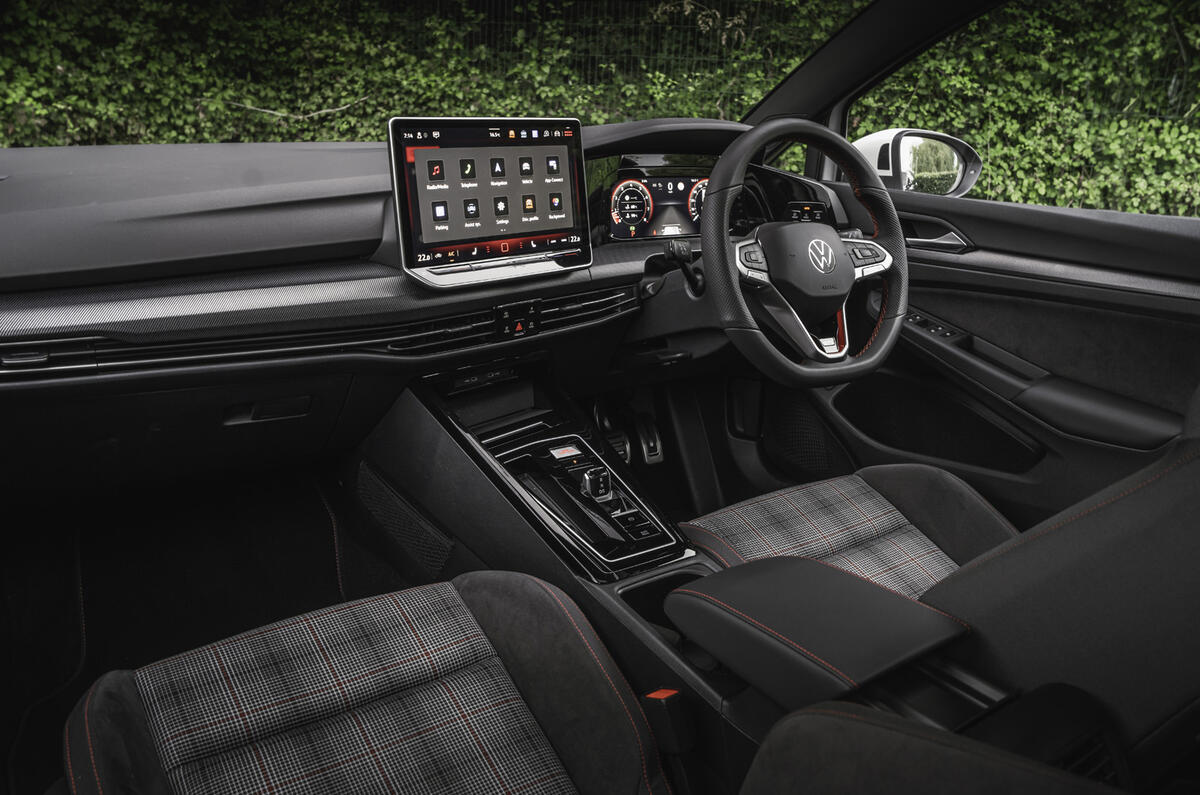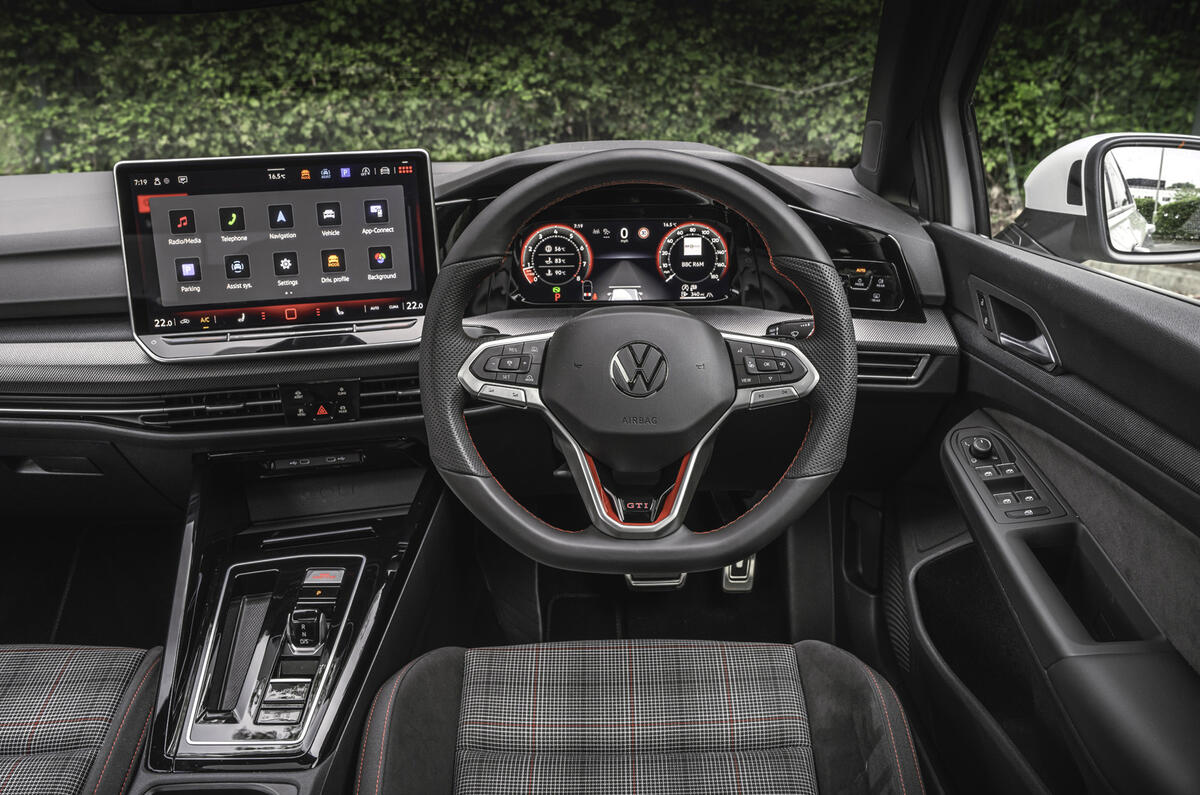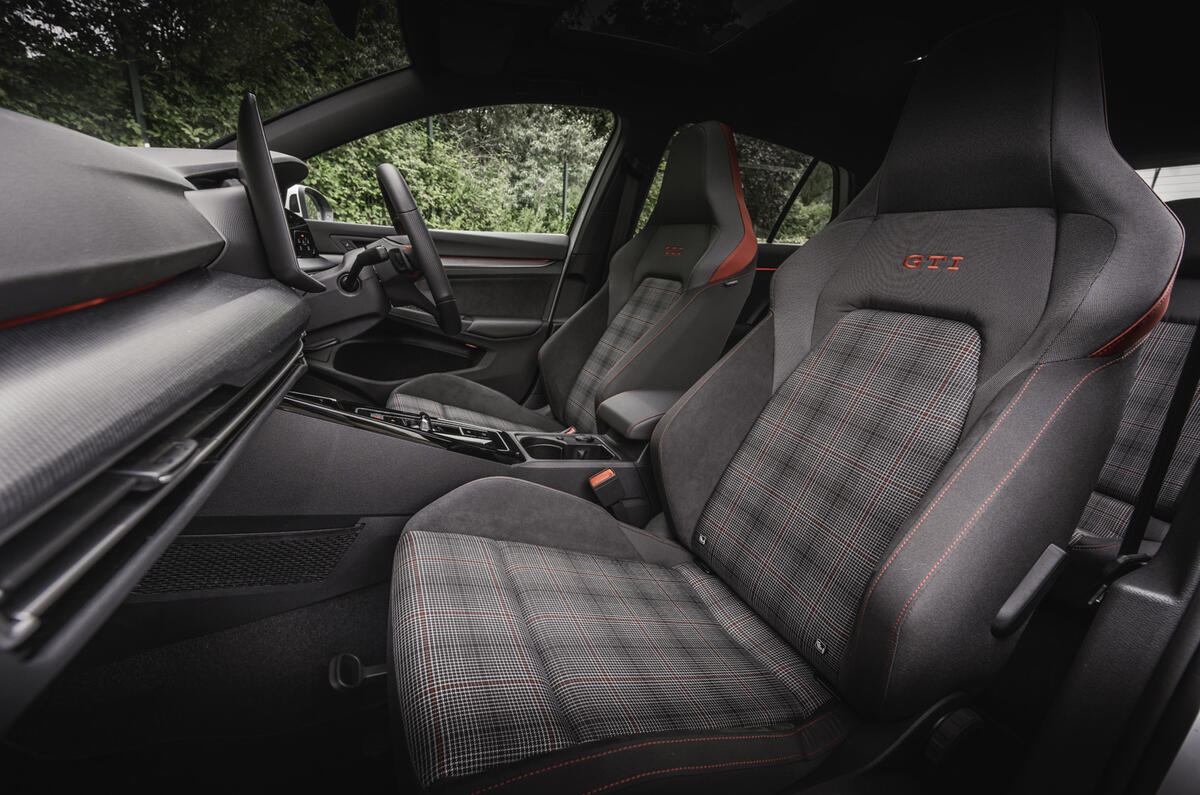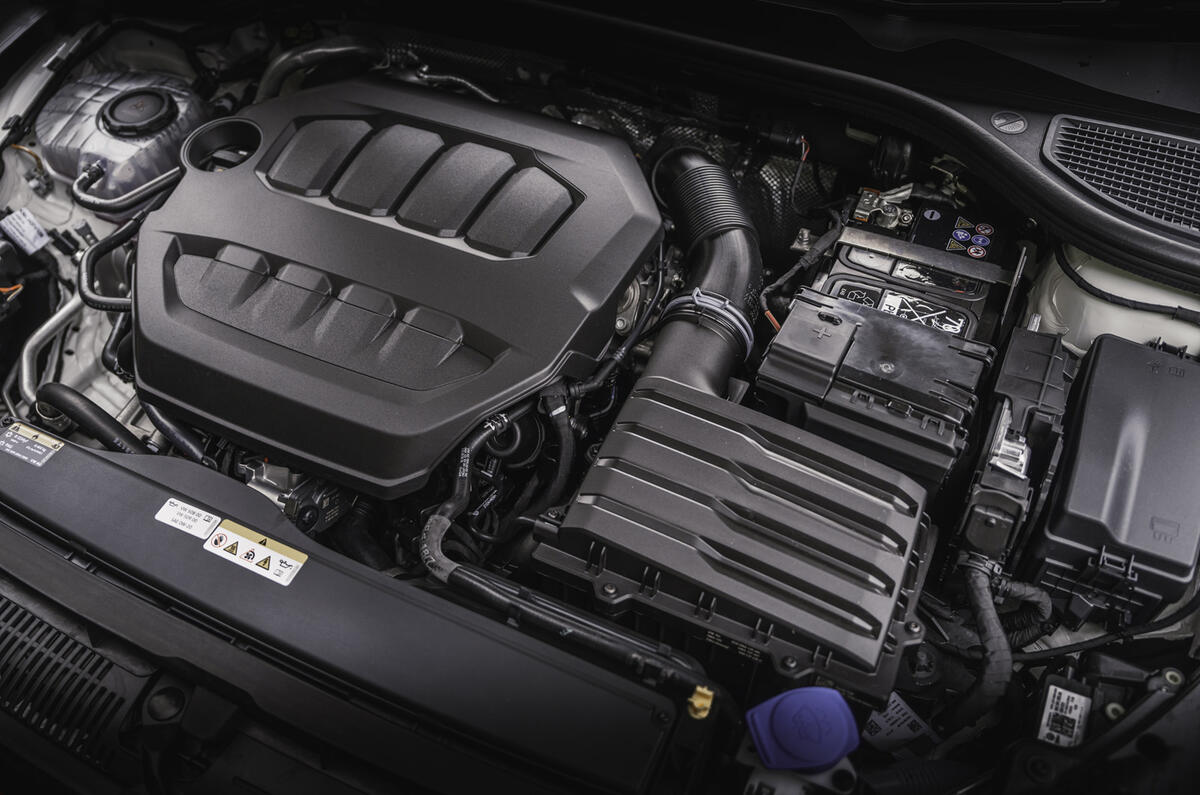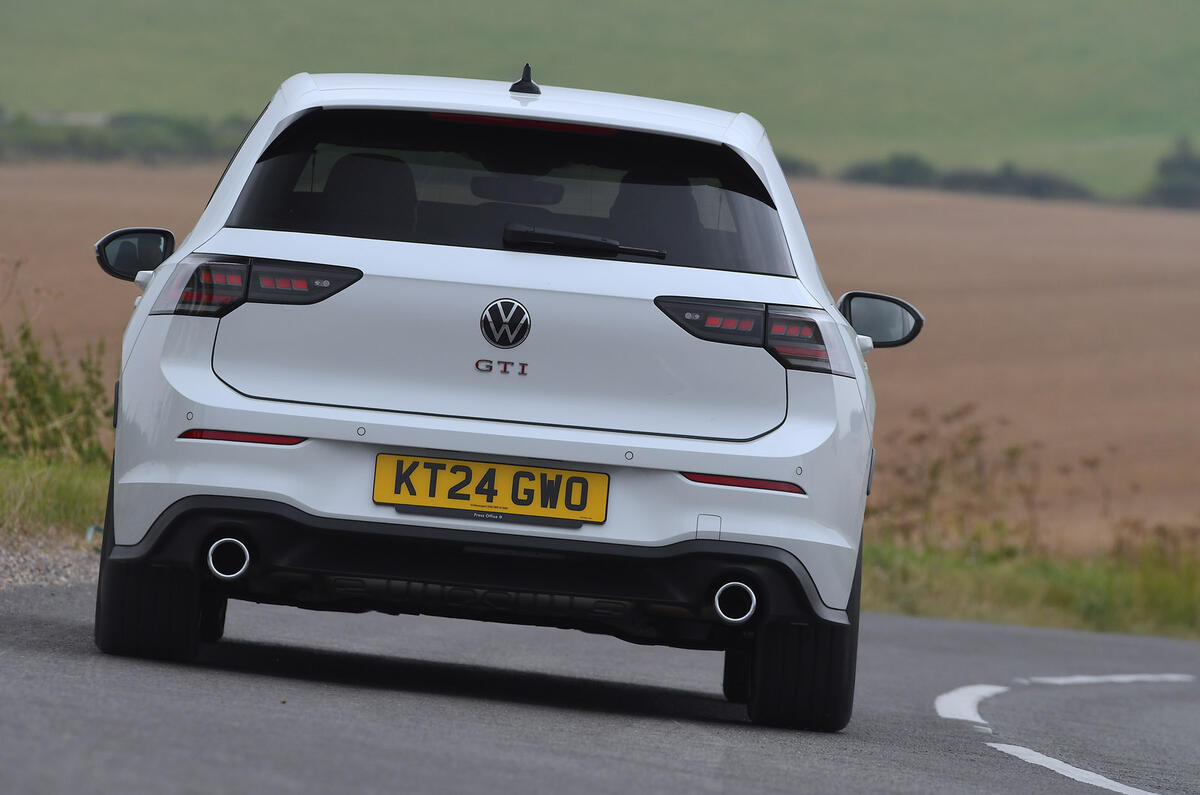The fundamentals of the Golf GTI are as comfortingly familiar as ever: it’s the usual Volkswagen MQB formula in its more performance-oriented spec. That means multi-link suspension rather than a torsion beam at the back, while at the front sits a 2.0-litre ‘EA888’ turbocharged engine. It has 19bhp more than the pre-facelift GTI: its 261bhp moves it closer to the GTI Clubsport, whose power remains at 296bhp.
It drives through a seven-speed dual-clutch automatic gearbox – the six-speed manual option has been axed – and a ‘VAQ’, which stands for Vorderachsquersperre, or ‘front axle lock’. It has been fitted to front-drive Volkswagen Group hot hatchbacks for a few years and uses a clutch pack external to the differential and which can lock one driveshaft to the differential gear carrier, thus creating a locking torque and in effect acting like a limited-slip differential.
The VAQ works together with the XDS torque-vectoring-by-braking system and the retuned variable-ratio ‘progressive steering’, which is now standard even on the regular GTI.
The Mk8.5 Golf GTI receives a number of cosmetic updates, too. Some are the same as those on the standard Volkswagen Golf, such as the redesigned lights: the headlights have become slightly sharper and more angular and the matrix LEDs are more powerful, while the tail-lights have also been redesigned and now feature dynamic indicators. All GTIs get a front light bar and a light-up VW logo.
Back at the front, the standard GTI and the more potent Clubsport have been further differentiated visually. The standard GTI has a less aggressive bumper design with five foglights on each side in an X-pattern, while the Clubsport has longer body-coloured wing graphics in the lower grille.














